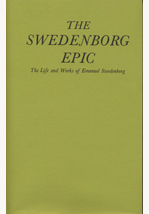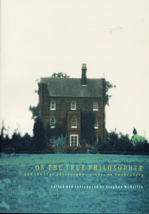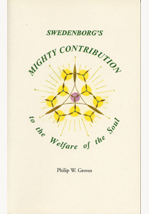
|

|

|

|
 |
|
Osteopathy and Swedenborg
|
|
|

Osteopathy and Swedenborg: The Influence of Emanuel Swedenborg on the Genesis and Development of Osteopathy, Specifically on Andrew Taylor Still and William Garner Sutherland.

|

|
 |

|

|

|

|
 |
|
Servetus, Swedenborg and the Nature of God
|
|
|

Servetus, Swedenborg and the Nature of God
Andrew M. Dibb
The Trinity was defined at the Council of Nicaea and the relationship of the human and divine natures of Christ was defined at Chalcedon. Very few questioned the Church's depictions of the nature of God. Two such mavericks, Michael Servetus (1509-1553) and Emanuel Swedenborg (1688-1772), in spite of their Christian educations, rejected the Church's creedal understanding of God and the Trinity. Although they lived in two different ages--the Reformed and Enlightenment, and there is no evidence that Swedenborg ever read or even knew of Servetus--the two men came to remarkably similar conclusions about the Nature of God. Each scholar stated that the Trinity does not rest in three Persons, but rather takes form in the single person of Jesus Christ, the visible God.

|

|
 |

|

|

|

|
 |
|
Swedenborg Epic
|
|
|

Swedenborg Epic

|

|
 |

|

|

|

|
 |
|
Swedenborg's Hidden Influence on Kant
|
|
|

"Swedenborg's Hidden Influence on Kant" by Gottlieb Florschutz (2014), is a careful tracing of the parallels between Kant and Swedenborg's views on the soul, life afterdeath and the metaphysical importance of moral goodness.

|

|
 |

|

|

|

|
 |
|
In Search of the Absolute
|
|
|

In Search of the Absolute[essays on Swedenborg and Literature]
Edited by Stephen McNeilly
This work marks the third volume of the Journal of the Swedenborg Society and the first on Swedenborg's relation to Literature.
Journal no. 1, Swedenborg and his Readers
Journal no. 2, On the True Philosopher
Journal no. 3, In Search of the Absolute

|

|
 |

|

|

|

|
 |
|
On the True Philosopher
|
|
|

On the True Philosopher
Journal no.2

|

|
 |

|

|

|

|
 |
|
Between Method and Madness
|
|
|

Bew tween Method and Madness [essays on Swedenborg and Literature]
Edited by Stephen McNeilly
This work marks the fourth volume of the Journal of the Swedenborg Society and the second on Swedenborg's relation to Literature.
Journal no. 1, Swedenborg and his Readers
Journal no. 2, On the True Philosopher
Journal no. 3, In Search of the Absolute

|

|
 |

|

|

|

|
 |
|
Swedenborg's Secret: a Biography
|
|
|

Swedenborg's Secret, a Biography
Lars Bergquist
Emanuel Swedenborg (1688-1772) was on of the greatest figures of the Enlightenment. A member of Sweden's ruling elite, he was also an innovative philosopher and scientist, making a thorough study of human anatomy and physiology. As an inventor his discoveries ranged form a method of finding terrestrial longitude to new ways of constructing docks and even designs for the submarine and airplane. In 1743, he underwent a dramatic spiritual awakening; thereafter his studies were increasingly directed towards what he had seen and heard among spirits and angels. It is these experiences that inspired a host of prominent writers, poets and artists including William Blake, Jorge Luis Borges, Honr� de Balzac, Charles Baudelaire, WB Yeats, Ralph Waldo Emerson, August Strindberg and Czeslaw Milosz.
Swedenborg's Secret, newly translated from the acclaimed Swedish Swedenborg's Hemlighet, is the first definitive, full-length biography for fifty years.
The great achievement of Swedenborg's Secret is to reclaim this towering figure from the margins of contemporary thought and place him where he belongs: as a founding father of modern spirituality and Western philosophy.

|

|
 |

|

|

|

|
 |
|
The Call
|
List Price: $12.95 Our Price: $12.95

|
|
|

The Call
This work first appeared in 1927 as "An Introduction to The Word Explained" by Dr. Alfred Acton. It has been revised and updated by his grandson, Asst. Bishop Alfred Acton II. It details an extremely important period of Swedenborg's life. 1927, 2014. 192 pgs.

|

|
 |

|

|

|

|
 |
|
Swedenborg's Mighty Contribution
|
|
|

Swedenborg's Mighty Contribution by Phillip Groves

|

|
 |